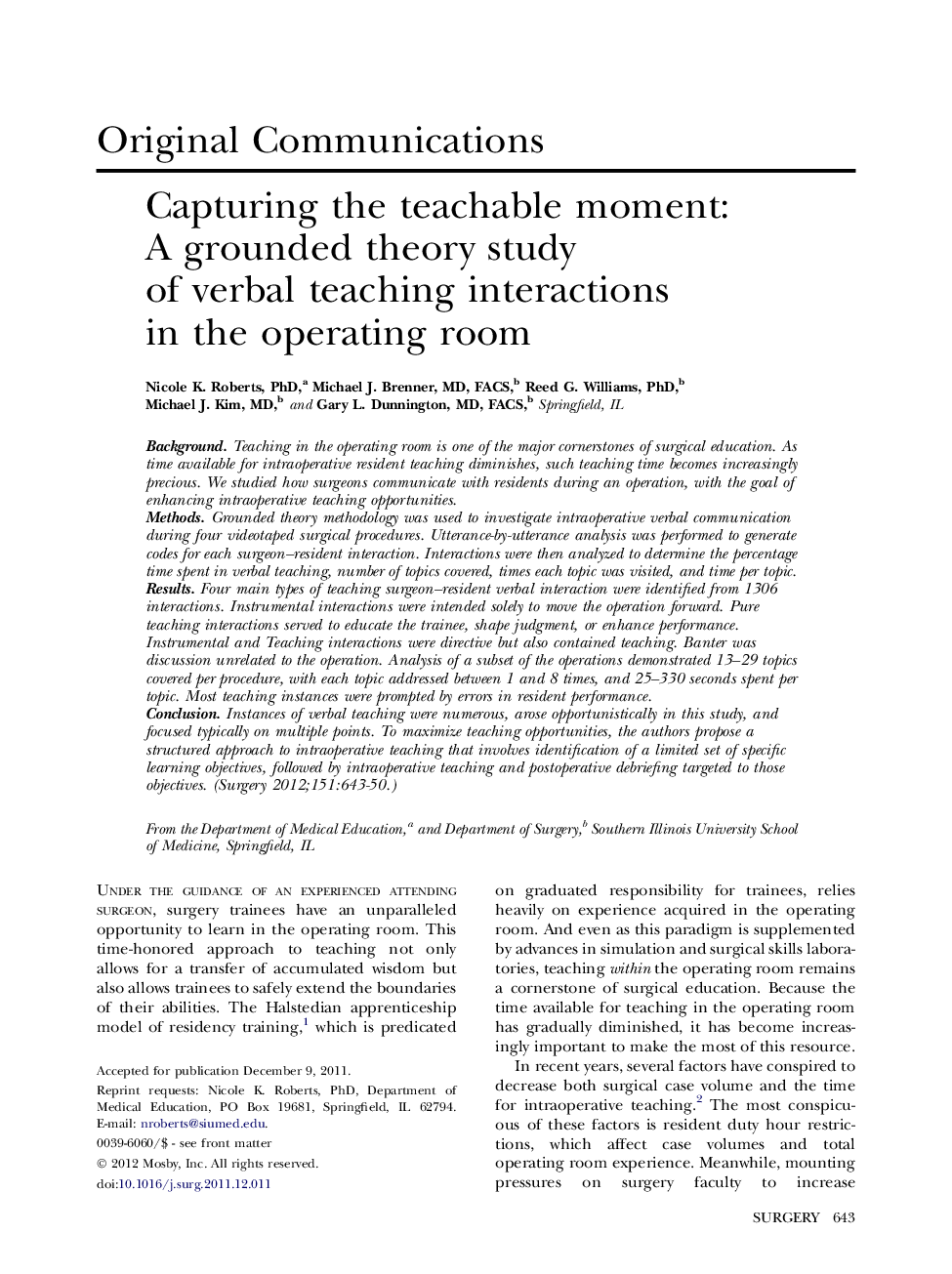| Article ID | Journal | Published Year | Pages | File Type |
|---|---|---|---|---|
| 4308455 | Surgery | 2012 | 8 Pages |
BackgroundTeaching in the operating room is one of the major cornerstones of surgical education. As time available for intraoperative resident teaching diminishes, such teaching time becomes increasingly precious. We studied how surgeons communicate with residents during an operation, with the goal of enhancing intraoperative teaching opportunities.MethodsGrounded theory methodology was used to investigate intraoperative verbal communication during four videotaped surgical procedures. Utterance-by-utterance analysis was performed to generate codes for each surgeon–resident interaction. Interactions were then analyzed to determine the percentage time spent in verbal teaching, number of topics covered, times each topic was visited, and time per topic.ResultsFour main types of teaching surgeon–resident verbal interaction were identified from 1306 interactions. Instrumental interactions were intended solely to move the operation forward. Pure teaching interactions served to educate the trainee, shape judgment, or enhance performance. Instrumental and Teaching interactions were directive but also contained teaching. Banter was discussion unrelated to the operation. Analysis of a subset of the operations demonstrated 13–29 topics covered per procedure, with each topic addressed between 1 and 8 times, and 25–330 seconds spent per topic. Most teaching instances were prompted by errors in resident performance.ConclusionInstances of verbal teaching were numerous, arose opportunistically in this study, and focused typically on multiple points. To maximize teaching opportunities, the authors propose a structured approach to intraoperative teaching that involves identification of a limited set of specific learning objectives, followed by intraoperative teaching and postoperative debriefing targeted to those objectives.
